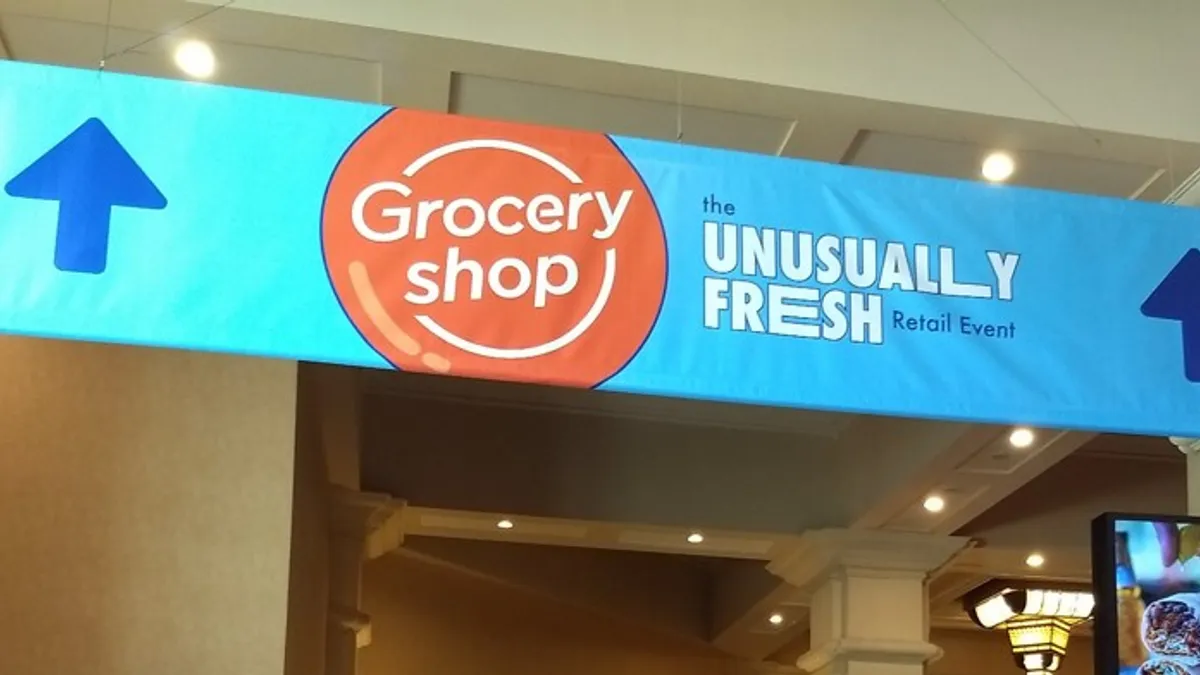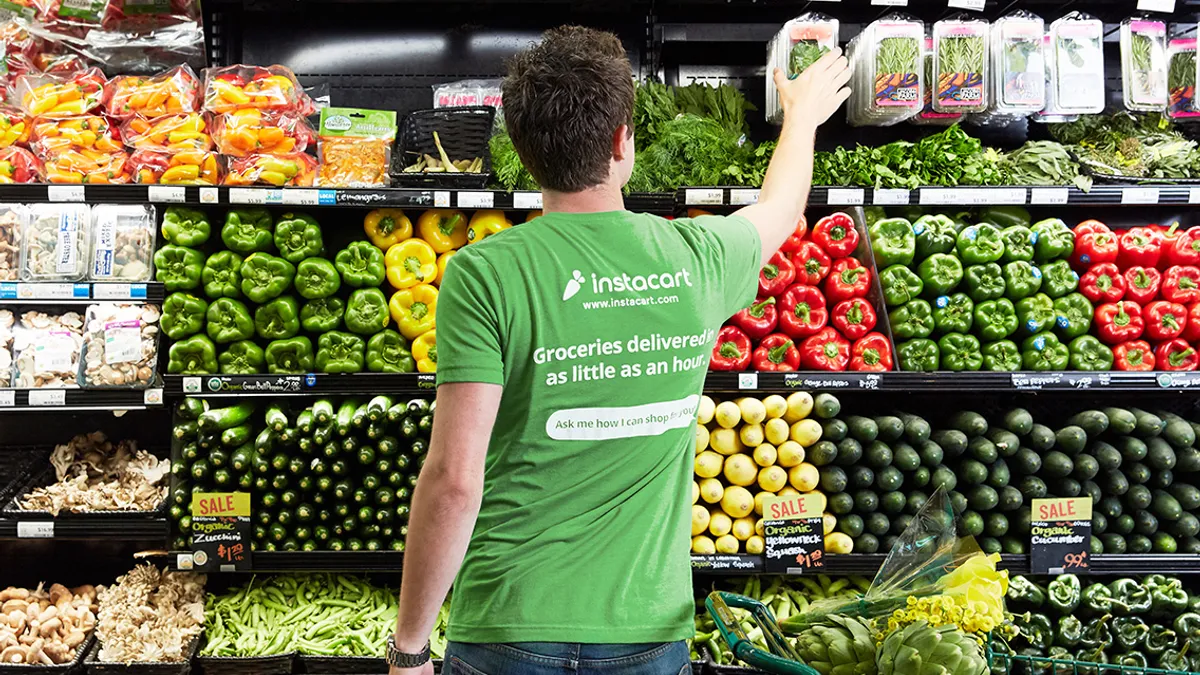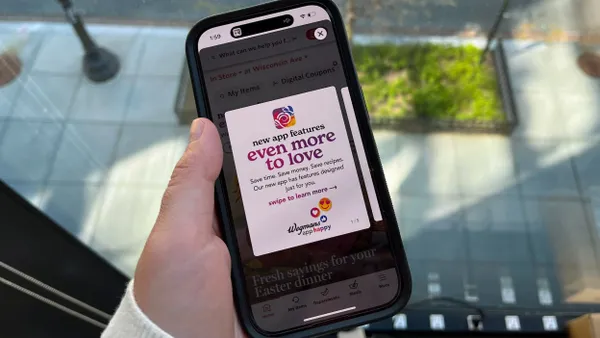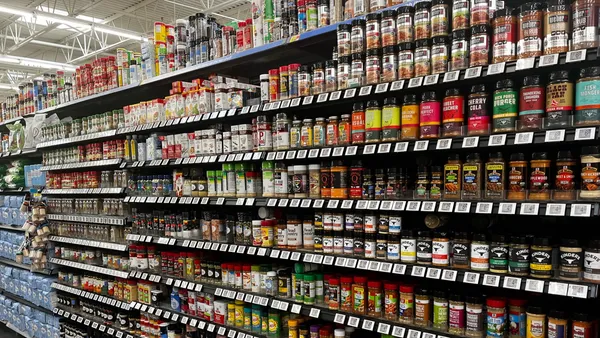Groceryshop is always an opportunity to take the pulse of the grocery industry and get a sense of what issues matter most to retailers. This year, the show, which took place last week in Las Vegas, was focused on practical concerns relating to retailers’ ability to generate in-store sales and connect with shoppers who are more technologically savvy — and distracted — than ever.
Vendors at the conference sought to connect grocers with an array of technology and other tools designed to deal with key issues that have risen to the top of their agendas as they adjust to a post-pandemic reality, including theft, improving convenience and cutting through the digital clutter to reach shoppers and drive sales.
Here are several key takeaways from the conference this year.
Electronic shelf labels are vying for attention
A walk around the two exhibit halls at Groceryshop made it evident that the grocery industry is heavily focused on enhancing the shopper experience in brick-and-mortar stores.
Signage technology was especially noticeable at the conference, as companies like Instacart, SES-imagotag and Hussmann unit Aperion displayed next-generation electronic shelf tags that push the envelope beyond merely letting shoppers know what items cost.
Newer equipment uses color, and in some cases video capabilities, to turn shelf edges into an opportunity to encourage shoppers to select items as they walk by. SES-imagotag, for example, showed off colorful video strips that resemble miniature versions of the long, narrow video screens that engage spectators at sports arenas.
Some of the digital signage making its way into the grocery space can even link with in-store digital media systems to reach shoppers at the precise moment when they can decide to put an item in their cart — or just keep walking.
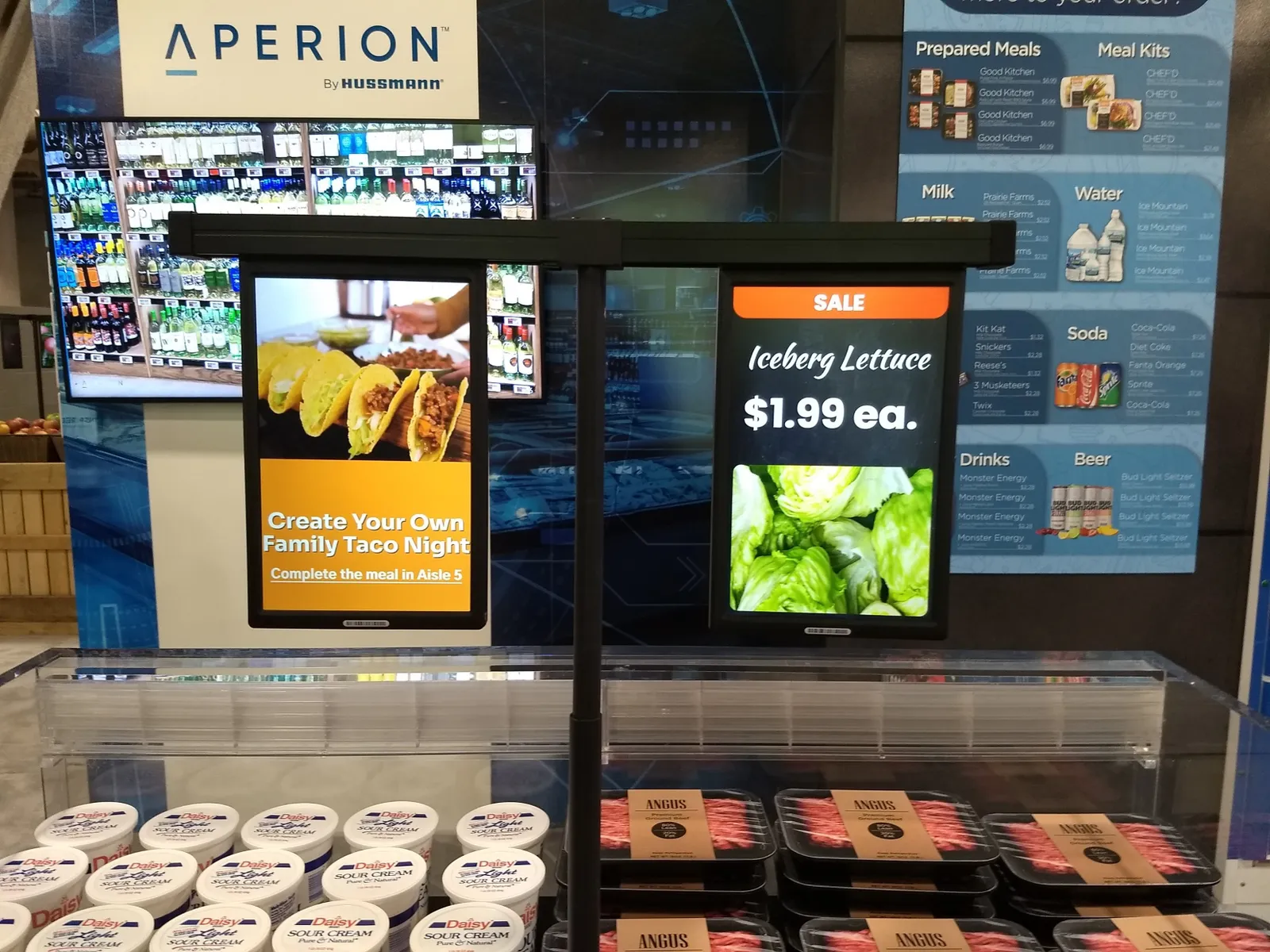
The grocery industry has become less profitable
As traditional grocers face continuing pressure from mass merchants like Walmart and Target as well as e-commerce giant Amazon, they have seen their earnings capacity decline at a significant clip, grocery industry analyst Scott Moses, partner and head of the grocery, pharmacy and restaurants investment banking group at Solomon Partners, said during a Tuesday session.
Twenty years ago, supermarkets typically turned in earnings margins before interest, taxes and other costs that were in the neighborhood of 7.5%. Now, those margins have sagged to around 5.5%, according to Moses. Meanwhile, companies like Amazon have seen their earnings grow substantially, he said.
That disparity in earnings has contributed to a stark difference in how Wall Street investors value supermarket companies and other retailers, Moses pointed out, adding that Amazon’s market capitalization alone is bigger than all of its traditional rivals' market capitalizations combined.
Grocers need content strategies to engage shoppers
The fast-growing role videos are playing in the grocery space was another key topic during Groceryshop, with an entire panel session on Wednesday devoted to the impact shoppable videos can have in driving customer loyalty and boosting sales.
Lorelei Bergin, vice president of retail, North America, Nielsen IQ, noted during the session that the COVID-19 pandemic supercharged people’s interest in using videos to learn about brands and products. Videos that focus on people’s specific needs are rising in importance as a way for retailers to connect with shoppers, with celebrities playing an especially powerful role in convincing people to make purchases, said Bergin.
Bergin observed that live video consumption has been growing especially quickly. People watched about 30 billion hours of live video in 2020, and the figure is poised to hit 50 billion next year, Bergin said, adding that retailers stand to benefit from the trend if they have a deliberate content strategy that will resonate with shoppers.
“You’ve got to make sure that you’re clear about what you’re trying to accomplish, and then make sure that content strategy has an intersection of value between the brands, between the retailer and between the shopper,” Begin said.
Kevin Miller, chief marketing officer of The Fresh Market, said during the session that the specialty grocer developed more than 600 videos last year, putting a high premium on production values and on ensuring the programs were entertaining in addition to being informative.
“When a customer comes to your website, they’re there for one reason: because they’re interested in you,” said Miller.
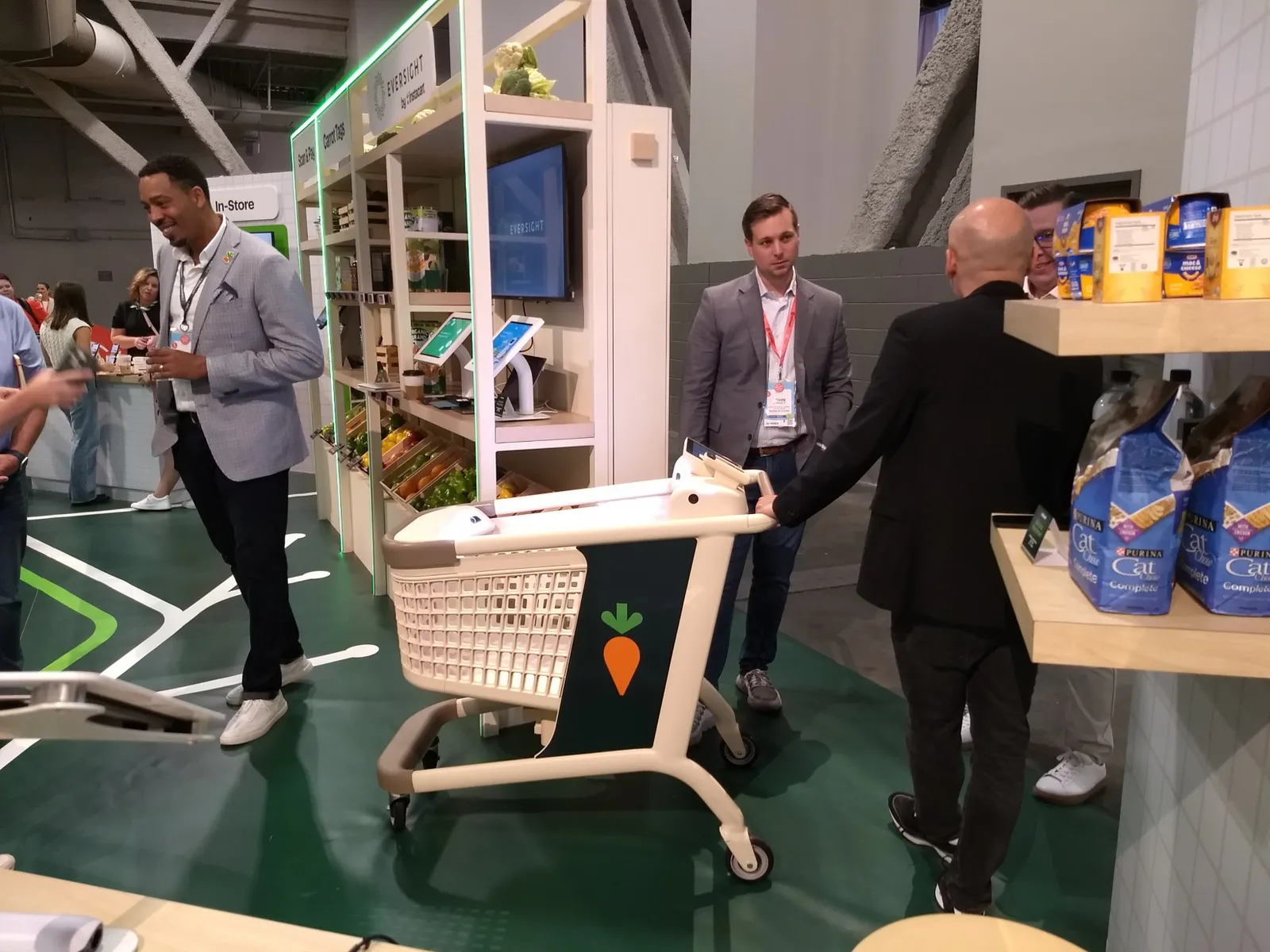
Retailers are looking to tech to stop store theft
Even as store theft poses a mounting challenge to grocers, retailers are also racking up significant losses from shoppers who inadvertently forget to scan items when using self-checkout stations, industry officials noted during the conference.
Smart carts are emerging as an effective way for retailers to push back on that trend, because they make it harder for people to overlook items, Dave Steck, vice president of IT infrastructure and application development for Schnuck Markets, said during a Wednesday session. Schnucks, a St. Louis-based chain of about 115 supermarkets, said in July that it intended to test Caper Cart smart carts from Instacart in some of its stores this year.
“I’ve watched a ton of videos on the theft that happens at self-checkout, and it’s surprising how much of it is inadvertent. The customer doesn't realize that the item that they thought they scanned didn't actually scan, so we [can] provide a better experience for the customer and help address the shrink” by using carts that record items as shoppers select them, Steck said.
Checkout terminals are rapidly evolving
As vendors search for ways to combat shrink, they’re also making it faster and easier for shoppers and store employees to identify produce during the checkout process, company representatives said during the conference.
While technology that can automatically recognize fruits and vegetables is not new, checkout equipment makers said they’re getting ready to make the technology more widely available during the coming months, in part because it holds the promise of reducing the likelihood that shoppers or checkout personnel will inadvertently or intentionally enter the wrong PLU code when processing an item.
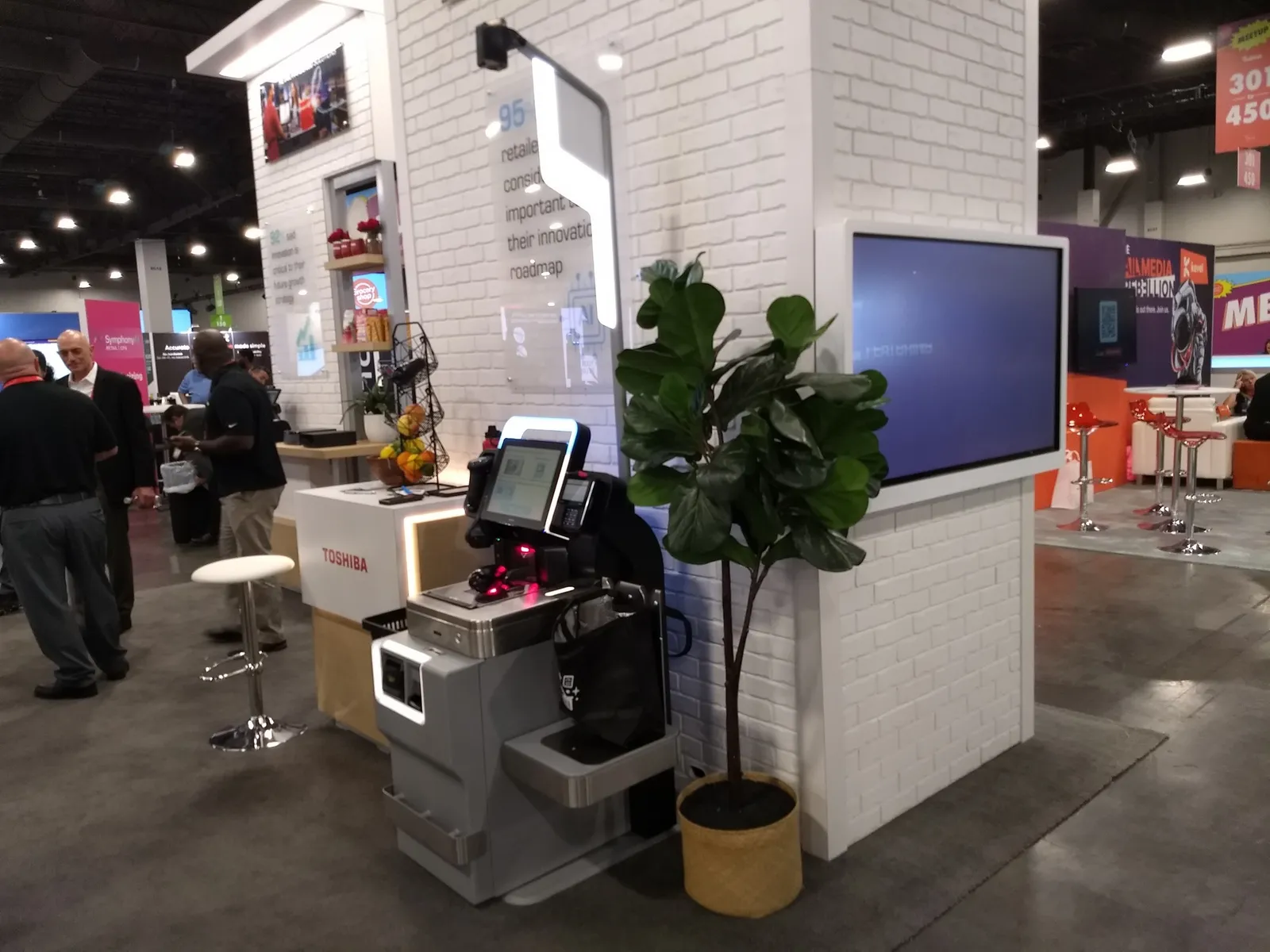
But while the computer vision systems may be especially useful at ensuring people do not misidentify produce, the equipment can also help make the checkout process faster, said Nino Hoerttrich, head of retail global marketing for checkout terminal supplier Diebold Nixdorf.
Even if the system cannot precisely identify a given item, it can make things easier and reduce error by presenting a narrow selection of choices instead of requiring the shopper or employee to know the PLU code or have to search the entire produce catalog for what they believe is the correct selection, Hoerttrich said.
“I think we see both scenarios [as] very relevant,” said Hoerttrich. “One is of course reducing shrink by finding the right items, but on the other hand side is also the non-malicious shrink [that] goes away.”



